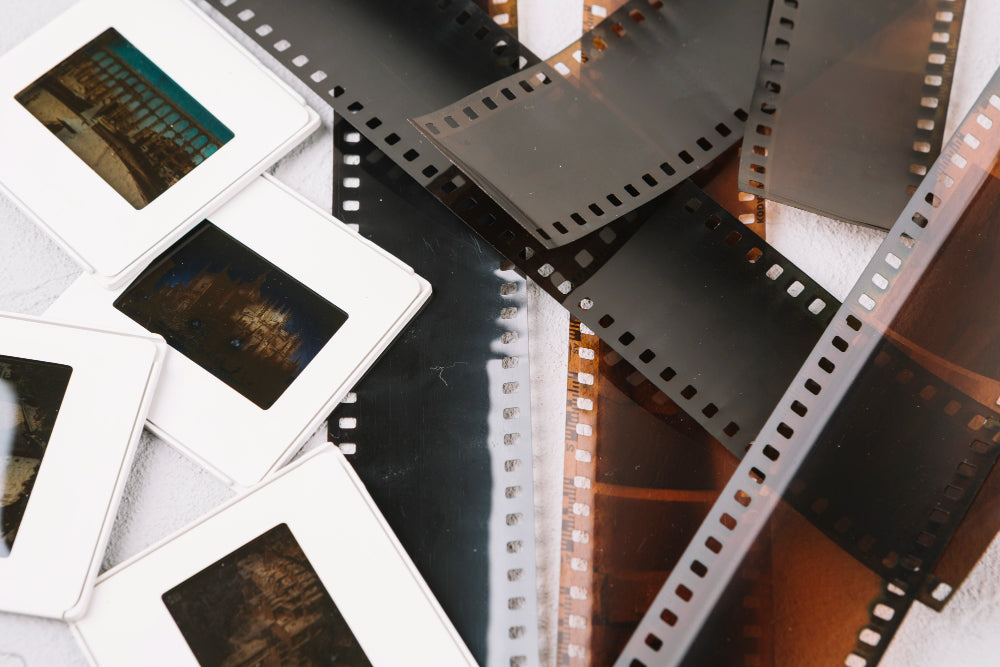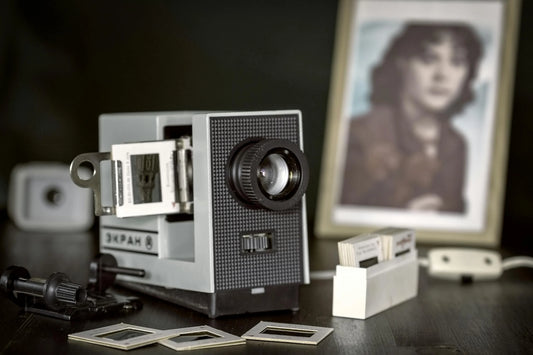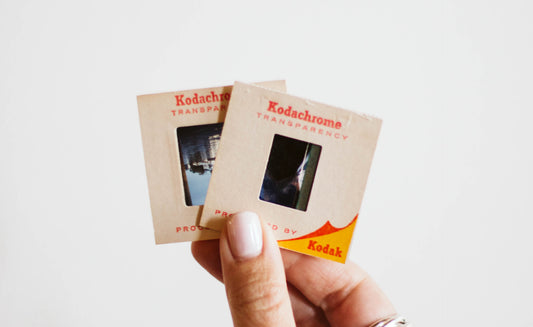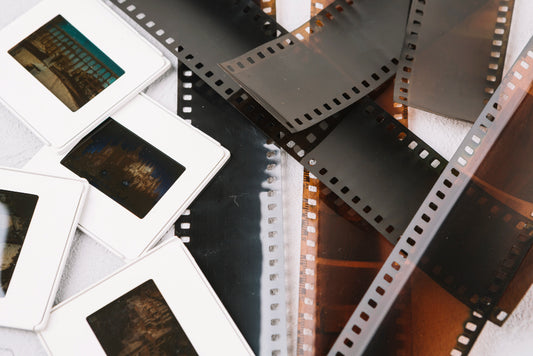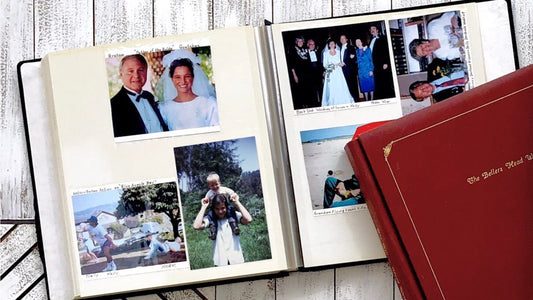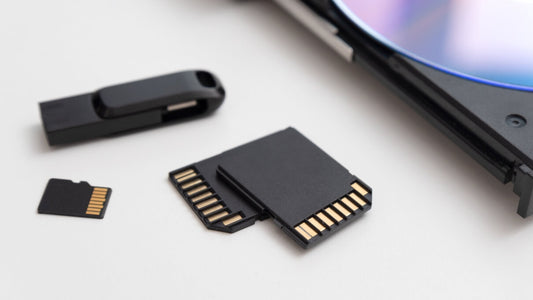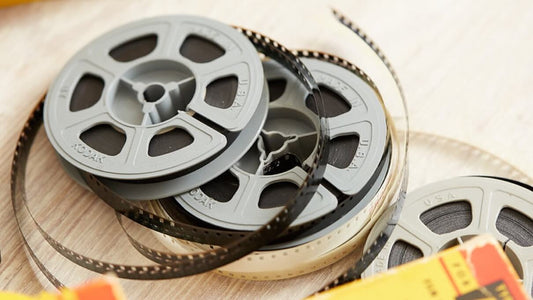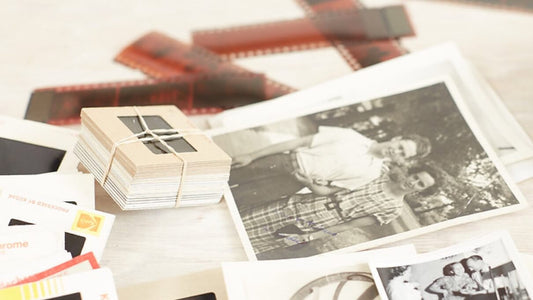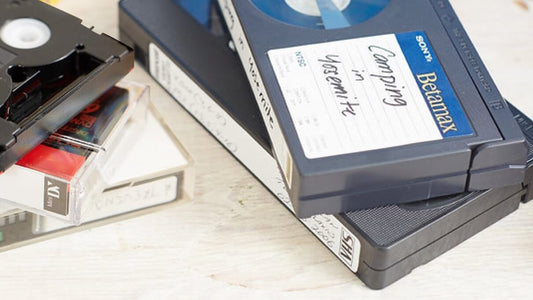Slide film is a wonderful way to view and share your memories because it offers a positive image, which means you can put it directly onto a screen with a slide projector. This also means you can easily create digital copies with a scanner without receiving a negative, or backward, image.
Because of this, lots of people love using slide film in the digital age to combine with digital memories as a physical back-up and to share with loved ones. Capture has been helping preserve memories for over 20 years and now we’re here to answer the question, “What is slide film?”
Keep reading to learn all about slide film and how it works, the advantages of using it, and the process from shooting slide film to development, mounting, and using your newly mounted memories.
Jump to:
- Understanding Slide Film
- The Composition of Slide Film
- The Process of Slide Film Photography
- Advantages and Challenges of Slide Film
- Applications of Slide Film
- Conclusion
Understanding Slide Film

Slide film, or color reversal film, is a positive film. Therefore, instead of creating a negative image, the picture will look how you saw it in the viewfinder. Slide film is also commonly referred to as E-6 film because the development process requires 6 baths including the developer, stop, and fixer.
Color negatives, on the other hand, are referred to as C-41 and use a chromogenic color print film development process. All reversal film in the modern world uses the E-6 process, which is not the same as the process used by Kodak Kodachrome.
FujiFilm still produces three types of slide film including Fuji Velvia 50, Velvia 100, and Provia 100f. In addition to Fujichrome, you can also get Kodak Ektachrome 100 Color Reversal film that’s known for high resolution, good details, and vivid colors. Other brands like Polaroid and Ilford also make reversal film.
Slide film offers some distinct advantages that we cover later on, but one of the main differences is the fact that you can mount it to a sleeve, insert it into a slide projector, and see the image as intended. That’s why it’s also known as transparency film. Additionally, some labs will produce photographic slides from digital image formats like JPEG images.
The Composition of Slide Film

Color slide film, categorized according to ASA or ISO rating for light sensitivity, has layers of emulsions that are each sensitive to different light colors. With dye couplers present, the interaction produces a positive image.
In addition to the emulsion layer that produces the image, there is a protective coating, base, and anti-halation backing. Historically, the base was made of glass, but these days it’s often made of polyester or other synthetic materials.
This is different from color negative film that contains layers of silver halide crystals and a single emulsion layer. With negative film, the latent image is converted into a negative image with the film developing process in a darkroom.
The Process of Slide Film Photography

Slide film is a little more difficult to work with because it has 1.5 stops of dynamic range and very little exposure latitude. You will have to set proper exposure and be able to effectively meter the scene to avoid saturation and ensure high contrast.
If you get the exposure right, it’s possible to create vibrant colors, high-resolution, and versatile lighting with slide film stock, but it might take some practice. Many photographers recommend starting with low exposure and working your way up. In addition, it’s best to practice before you need to capture something important just in case the exposure is still ineffective.
After you take your slide film photos, the film processing step will require 6 baths. This process is also more difficult with slide film vs other film types because of the lower ISO value, but it will produce vivid color and fine grain. The development process will include developer, stop, and fixer to finalize the positive image photograph.
Finally, if you plan on viewing your slide film on a projector, it will need to be mounted. There are machines that can do this for you, but the process will cut the film into single frames and mount it in a cardboard or plastic holder. This can then be inserted into a machine to project the image to a large number of people at once.
Advantages and Challenges of Slide Film

There are a number of advantages to using slide film. First, reversal film is more versatile. It’s available in a wide variety of formats including 8mm and medium format, which makes it great for creating different results depending on your specific photo project.
Furthermore, it lasts longer than negative films and is less likely to fade over time. Even decades after exposure, many people find that their slide film has original vivid colors. The quality of image also starts higher than negative film with more sharp contrasts and higher resolution.
Despite these numerous advantages for image quality, vividness, and usefulness, there are also some disadvantages. It’s more difficult to use because you must use precise exposure and meter settings. In addition, it’s more expensive than negative film types and may not be as readily available as your local shops.
Applications of Slide Film

There are lots of reasons to choose slide film and historically the positive image has been useful in photography and art. That’s because the positive image could be used to tell stories and the flexibility of including both color and black and white film of different sizes and types gave artists much more to work with.
People still use their slide film for arts and crafts and other creative projects. You can use slide film to create wallpaper, lampshades, jewelry, collages, and anything else while still showing the image that the photographer intended to take (instead of a reversed or negative image).
Since slide carousels were used in many applications throughout the years from showcasing vacation slideshows to teaching high school or college classes, many people also have a nostalgic feeling toward slide film. This may be partially responsible for the continued use and resurgence among photography enthusiasts.
While digital cameras have all but replaced film cameras, there are some things only color transparency film can offer. Slide film can often capture subtle details and contrasting colors better than modern digital cameras. A digital camera that captures ultra-high resolution will also cost significantly more than a camera and some slide film.
The advantages and potential applications of slide film have led to a significant resurgence in popularity as photographers continue to tout the benefits and use analog film over digital formats.
Conclusion

Now that you know what is slide film processing and the advantages including vivid colors, flexibility, durability, and positive image, you can decide if you want to join in on the resurgence in popularity of slide film. If so, just make sure that you get your camera exposure right to ensure a high-resolution positive image that you can insert into a projector.
While slide film is more durable than negative film, it’s still important to preserve it in digital format to protect against fading, water damage, and other problems. Capture can digitize your slide film, negatives, photo prints, and more as high-quality digital copies. Click here to learn more!

